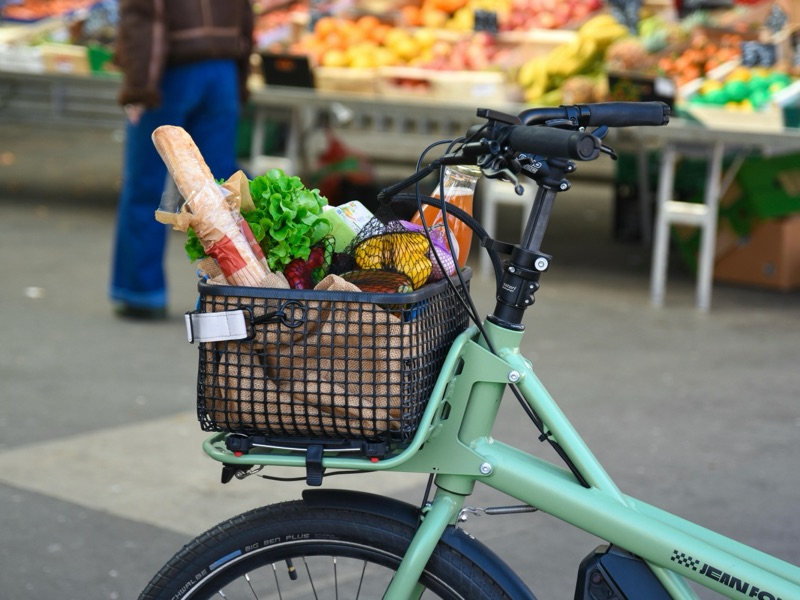When Amazon entered the grocery sector, many believed it was poised to revolutionize supermarkets just as it had transformed online retail. From the high-profile acquisition of Whole Foods in 2017 to the futuristic promise of cashier-less Amazon Go stores, the company appeared to be on a clear path toward becoming a dominant force in brick-and-mortar grocery. Yet, by 2025, Amazon’s supermarket ambitions have largely stalled. Store openings have slowed, experiments like Just Walk Out technology have been rolled back, and the company has failed to establish itself as a major player in the U.S. grocery market.
This article examines what went wrong, what Amazon could have done differently, and what the future holds for supermarkets in an increasingly competitive and low-margin industry.

Amazon’s Grocery Timeline: High Hopes, Uneven Execution
- 2017: Amazon acquires Whole Foods Market for $13.7 billion, gaining a foothold in physical grocery retail.
- 2018: Amazon launches Amazon Go — cashier-less convenience stores using computer vision and sensor fusion to eliminate checkouts.
- 2020–2021: Amazon Fresh physical stores open across the U.S., with a blend of conventional grocery offerings and advanced tech like smart shopping carts and Just Walk Out technology.
- 2022–2023: Mixed consumer feedback leads to closures and a pause on new store launches. Amazon reviews its strategy.
- 2024–2025: Amazon begins scaling back its Just Walk Out technology in favor of smart carts. Store redesigns begin, aimed at better aligning with customer expectations and price sensitivity.

Why Amazon’s Supermarket Plans Fell Short
1. Technology Overreach
Amazon’s Just Walk Out technology, while innovative, was difficult to scale. It relied on a complex network of cameras, sensors, and machine learning models to identify which items customers picked up and charge them automatically. While it worked reasonably well in small-format Go stores, it struggled in larger, more chaotic environments like full-size Fresh supermarkets. Issues ranged from items not being properly tracked to customer discomfort with surveillance and privacy concerns.
Additionally, the high cost of installing and maintaining this infrastructure made it difficult to justify in a sector known for razor-thin margins.
2. Unclear Market Positioning
Unlike Whole Foods, which is clearly positioned as a premium organic grocer, Amazon Fresh struggled to carve out a clear identity. Was it meant to be high-tech? Budget-friendly? Premium? Many customers didn’t understand the difference between Fresh and Whole Foods, or how either differed from traditional options like Kroger, Walmart, or Aldi. The inconsistent branding and store experiences confused consumers and undermined loyalty.
3. Customer Habits and Loyalty
Grocery shopping is habitual and highly localized. Most consumers shop based on convenience, price, and familiarity. Amazon’s lack of local market penetration, especially in rural and suburban areas, made it hard to win over entrenched customer bases. Moreover, Amazon’s pricing and promotions didn’t consistently beat major players like Walmart or regional grocers.
4. Operational Complexity
Running a national supermarket chain is logistically complex. From supply chains and perishable inventory to store staffing and real estate management, it’s an entirely different challenge from operating digital marketplaces or warehouses. Despite Amazon’s logistical prowess in e-commerce, it underestimated the nuances of traditional grocery operations.

What Could Amazon Have Done Differently?
1. Focus on Strategic Partnerships
Rather than building a new chain from scratch, Amazon could have deepened its relationship with existing grocers through logistics partnerships, private-label integrations, or Prime-linked incentives. This would have allowed it to scale reach without the overhead of full store operations.
2. Invest in E-Grocery Leadership
Amazon has strong fulfillment capabilities and could have doubled down on becoming the best-in-class provider of online grocery delivery and pickup — areas that became increasingly important during and after the pandemic. Instead of dividing resources between tech-heavy physical stores and online services, Amazon might have focused on dominating online grocery in the way it dominates general e-commerce.
3. Simplify and Localize Store Formats
Amazon Fresh stores often felt overly engineered. A simplified, consistent store format — tailored to local preferences and shopping patterns — could have improved customer satisfaction and return visits. Competitors like Aldi and Trader Joe’s have succeeded with small-footprint stores, limited SKUs, and clear brand identities.
The Bleak Outlook for Supermarkets in General
The challenges Amazon faced are emblematic of the broader grocery industry’s struggles:
- Low Margins: Grocery remains one of the least profitable sectors in retail, making innovation expensive and hard to sustain.
- High Competition: Big-box retailers like Walmart and Costco dominate on price and scale. Regional players often have loyal customer bases. Discount grocers like Aldi continue to expand.
- Stagnating Foot Traffic: As more consumers experiment with online grocery options and meal delivery services, in-store visits are declining in many areas.
- Rising Operational Costs: Labor, energy, and real estate costs continue to climb, pressuring profitability across the industry.

Conclusion
Amazon’s attempt to reinvent the supermarket has largely fallen flat, not because the ideas were flawed, but because the execution was mismatched to the realities of the grocery business. The company’s failure to scale cashier-less technology, confusion over store branding, and the inherent difficulties of competing in a crowded, low-margin market all contributed to its retreat.
While Amazon will likely maintain a presence in groceries — particularly through Whole Foods and its online Fresh delivery service — its dream of becoming the supermarket of the future has, at least for now, stalled. Meanwhile, the supermarket industry as a whole faces a bleak and competitive future, one where survival may depend more on efficiency and value than on cutting-edge innovation.
Comments
Post a Comment